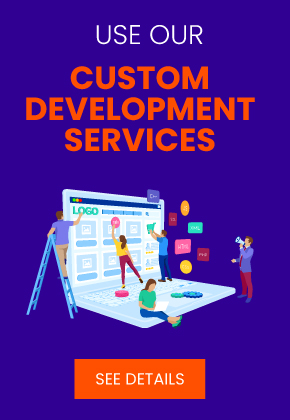In 2023, there are several growth strategies that e-commerce businesses can use to increase their sales and expand their customer base. Here are some of the most effective ones:
- Personalization: Personalizing the shopping experience for each customer is a crucial growth strategy. Using data analytics, AI, and machine learning algorithms to personalize product recommendations, messaging, and marketing campaigns to customers can help improve the customer experience.
Personalization has become increasingly important in e-commerce as customers expect a more personalized shopping experience. By providing personalized recommendations and offers, e-commerce businesses can improve customer satisfaction, increase engagement and loyalty, and ultimately drive more sales and revenue. However, it’s important to balance personalization with privacy concerns and ensure that customer data is collected and used in a transparent and ethical manner.
- Omni-channel marketing: Omni-channel marketing involves using multiple channels to reach customers and provide a seamless shopping experience across channels, such as websites, social media, mobile, and in-store.
The goal of Omni channel marketing is to enable customers to interact with a brand through their preferred channel while maintaining a consistent message and experience. By doing so, businesses can increase customer loyalty, drive sales, and improve customer satisfaction.
Some examples of Omni channel marketing include:
- Allowing customers to purchase products online and pick them up in-store
- Providing personalized recommendations based on a customer’s browsing or purchase history
- Offering customer service through multiple channels, such as email, phone, and social media
- Using targeted advertising and promotions across different channels to reach customers at the right time and place
- Augmented Reality (AR) and Virtual Reality (VR): AR and VR technology can enhance the shopping experience by allowing customers to try on products virtually, which can boost customer confidence in the product and increase conversions. This technology is becoming more widely available and affordable for e-commerce businesses to implement.
The potential applications of VR are vast, including gaming, education, training simulations, virtual tours, remote work and collaboration, and even medical and therapeutic uses, such as treating phobias, PTSD, and chronic pain.
As technology advances, VR is expected to become even more realistic, accessible, and affordable, leading to more widespread adoption and integration into various industries and areas of life.

- Voice Search Optimization: With the rise of voice-activated assistants like Siri, Alexa, and Google Assistant, optimizing your e-commerce store for voice search is a strategy that can increase your visibility and reach more customers. This can involve optimizing your product descriptions and content for natural language and conversational queries.
Voice search optimization involves several key tactics, including:
- Using natural language: Voice search queries are often longer and more conversational than text-based queries, so it’s important to use natural language and long-tail keywords in your content.
- Structuring content for featured snippets: Featured snippets are the short answers that appear at the top of search engine results, and they are often the source of information for voice search results. Structuring your content to answer common questions and using headings and bullet points can increase your chances of being featured.
- Optimizing for local search: Voice searches are often used to find local businesses and services, so optimizing your content for local searches, such as using location-based keywords, can help you rank higher in voice search results.
- Improving website speed: Voice searchers expect quick and accurate results, so having a fast-loading website and mobile-friendly design can improve your chances of ranking higher in voice search results.
- Using schema markup: Schema markup is a code that helps search engines understand the content on your website. Adding schema markup to your content can improve your chances of being featured in rich snippets and voice search results.
- Subscription-based models: Subscription-based models can provide a steady and predictable revenue stream for e-commerce businesses. By offering recurring shipments of products, businesses can ensure customer loyalty and increase the lifetime value of each customer.
A business model where customers pay a recurring fee to access a product or service. This model has become increasingly popular in recent years, especially in industries such as software, media, and e-commerce.
There are various types of subscription-based models, including:
- Subscription-based products: This model involves offering physical or digital products that customers regularly receive, such as a monthly delivery of a box of makeup or snacks.
- Subscription-based services: This model involves offering access to a service that customers regularly use, such as a music streaming service, a fitness class membership, or a software subscription.
- Freemium model: This model offers basic features of a product or service for free while charging customers for additional features or advanced access.
- Pay-as-you-go model: This model offers customers access to a service or product on a per-user basis, charging them only for what they use.

- Sustainable and eco-friendly practices: Consumers are becoming more environmentally conscious and are looking for businesses that prioritize sustainability. By adopting eco-friendly practices, such as using recyclable packaging or reducing carbon footprint, e-commerce businesses can differentiate themselves from competitors and attract environmentally conscious customers.
Sustainable and eco-friendly practices refer to actions and behaviors that minimize harm to the environment and promote the long-term sustainability of natural resources. These practices can be applied in many areas, including energy use, waste management, transportation, agriculture, and manufacturing.
Here are some examples of sustainable and eco-friendly practices:
- Reduce, reuse, and recycle: This is a basic principle of sustainable living. By reducing the amount of waste we produce, reusing items instead of throwing them away, and recycling materials, we can significantly reduce the amount of waste that ends up in landfills.
- Use renewable energy sources: Renewable energy sources, such as solar, wind, and hydropower, are sustainable alternatives to fossil fuels. By using renewable energy, we can reduce our dependence on non-renewable resources and lower our carbon footprint.
- Practice sustainable agriculture: Sustainable agriculture practices focus on using resources efficiently, reducing waste, and minimizing environmental damage. This can include practices such as crop rotation, soil conservation, and reduced pesticide use.
- Choose eco-friendly products: When shopping for products, look for items that are made from sustainable materials and have minimal packaging. This can include products made from recycled materials or items that can be easily recycled or composted after use.
- Reduce water consumption: Water is a finite resource, and conserving it is essential for sustainability. Simple actions such as fixing leaks, using low-flow showerheads, and reducing lawn watering can significantly reduce water consumption.
- Use public transportation or alternative modes of transportation: Transportation is a significant source of greenhouse gas emissions. Using public transportation, carpooling, biking or walking can help reduce emissions and promote a more sustainable lifestyle.
By adopting these sustainable and eco-friendly practices, we can help protect the environment and promote a more sustainable future.
- Influencer Marketing: Influencer marketing is a form of marketing in which businesses or brands partner with individuals who have a large following on social media platforms such as Instagram, YouTube, or TikTok. These individuals, known as influencers, have a significant impact on their followers’ buying decisions and are often seen as trendsetters in their respective industries or niches.
The main goal of influencer marketing is to reach a wider audience and promote a product or service through an influencer’s endorsement or recommendation. This can take the form of sponsored content, product reviews, giveaways, or collaborations. Influencer marketing is particularly popular among industries such as beauty, fashion, travel, and food, but it can be applied to almost any industry.
Influencer marketing can be an effective way for businesses to increase brand awareness, engagement, and sales. However, it is important for businesses to choose the right influencers who align with their brand values and target audience and to disclose any sponsored content in accordance with advertising guidelines.
Overall, e-commerce businesses should focus on providing an exceptional customer experience and finding ways to differentiate themselves from competitors in order to succeed and grow in 2023.





